“There’s genuinely nothing cooler than a well-maintained, high-mileage vehicle. This E46 330Ci has the most disciplined service routine I’ve ever encountered... At well over 200k miles, this thing is spotless, handles and drives better than 99% of cars I’ve been behind the wheel of, still looks stunning, and has more personality than money can buy. A true testament to BMWs and what they’re capable of when properly maintained. I genuinely love this car and it entirely changed my perspective on what it means to be OE+.”
—Mike Pieta, Owner of Bavhaus
Backstory
Home · Backstory · Maintenance · Resources · Gallery · FAQ

Boy Meets Car
Nearly 20 years and more than 200,000 miles ago, I became an E46 fanatic. My ’02 BMW 330Ci convertible taught me to be an investigator out of curiosity, a mechanic out of necessity, and an enthusiast out of passion. Before that, however, it was a different story.
Growing up, I only knew how to check my oil and change a tire. Everything else required a visit to the local mechanic. My family bought used—never new—which meant that shop repair costs were always factored into a vehicle’s budget. The assumption was that cars are expensive, repairs are complex, and you need to be a highly skilled expert to work on them.
That perspective changed after an E46 entered my life. It reshaped the way I would look at car ownership for years to come and ignited a do-it-yourself mindset that has served me well ever since.

In 2007, I purchased a single-owner ’02 BMW 330Ci with 40,000 miles for $20,000. It was stylish and sporty, and its connection to the road inspired confidence through every curve. Driving down winding roads and along mountain ridgelines left me grinning from ear to ear.
It was a far cry from my previous vehicle. Gone were the days of hot swapping fuses one-handed in the driver’s footwell when the radio and other accessories went out in the middle of traffic (my previous car had character).
The E46 served as a great icebreaker and conversation starter, facilitating social engagements that might otherwise never have happened. Whether it was driving across the country, heading to regional car meets, or just around the corner to the local grocery store, every mile was exhilarating.

When you don’t know much about cars, however, a few things can catch you by surprise.
My first lesson was when the alternator failed on the highway. Unfamiliar with the symptoms, I had hoped the issue would eventually resolve itself—after 3 hours on a tow truck and $900 at a dealership, it ultimately did. I later experienced the infamous E46 failed expansion tank, thankfully at night so the illuminated temperature gauge was hard to miss—another tow truck and another $600 to fix.
More miles meant more repairs: a new crankcase breather valve ($600), oil filter housing gasket ($500), and new brake pads and rotors ($1,200) quickly followed. Service inspections I and II came all too regularly and required another $1,500 to $2,000. Every dealership visit seemed to run around $1,000. (Those were mid-2000s prices.)
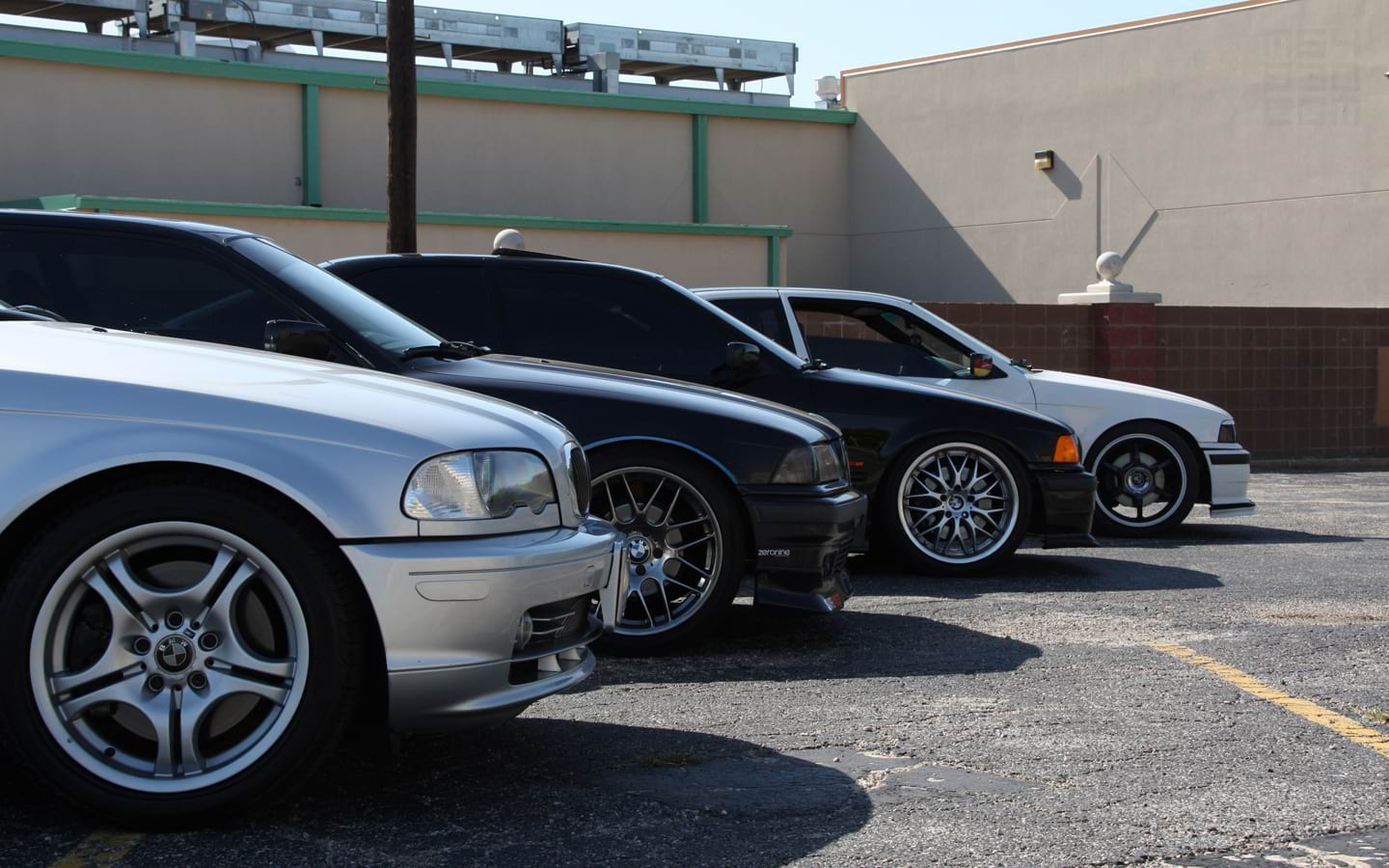
The Tipping Point
Regardless of repairs in those early years, the thrill of driving the car still far outweighed the cost of maintaining it at dealerships.
It wasn’t until finding damage caused by a technician (and subsequent misrepresentation of the extent, time, and cost to repair it), that I decided to look into handling repairs myself. After some research, it turned out the particular fix was much, much simpler than it was made out to be. A continued series of negative experiences at that dealership highlighted a growing trend, and I decided then that anything that broke going forward I would fix myself. My lack of knowledge wasn’t benefiting either myself or the car.
I didn’t realize until later just how big an undertaking that resolution would be—nor did I expect how grateful I would be for making it. I started small, adopting the approach that “If you can easily see it or touch it, you can replace it.” As a result, my first DIY tasks were quick fixes: changing out light bulbs, replacing wiper blades, and putting in new turn signal housings, trunk struts, and a new battery, as well as miscellaneous interior trim pieces. Each task had a way of leading me to the next.

From there, my focus turned to basic maintenance: air filters, intake boots, the DISA valve, and engine belts. When researching how to replace the serpentine belt, though, I realized it also made sense to change the tensioners and pulleys. Rather than repeat the same disassembly steps again in the future, I took it yet a step further and decided to address the entire cooling system while I was in there. Having a reliable vehicle inspired confidence, and successfully repairing it only fueled that feeling further.
Every part of the car I touched became an opportunity to learn (and as a result of knowing so little, I was able to learn quite a lot). On a separate occasion, while replacing more involved steering components, I decided to overhaul the front suspension since the car was apart and would require an alignment anyway. I made the decision to tackle the rear suspension at the same time, as well. By searching for overlap and efficiencies, I was able to build my metaphorical and physical toolboxes.
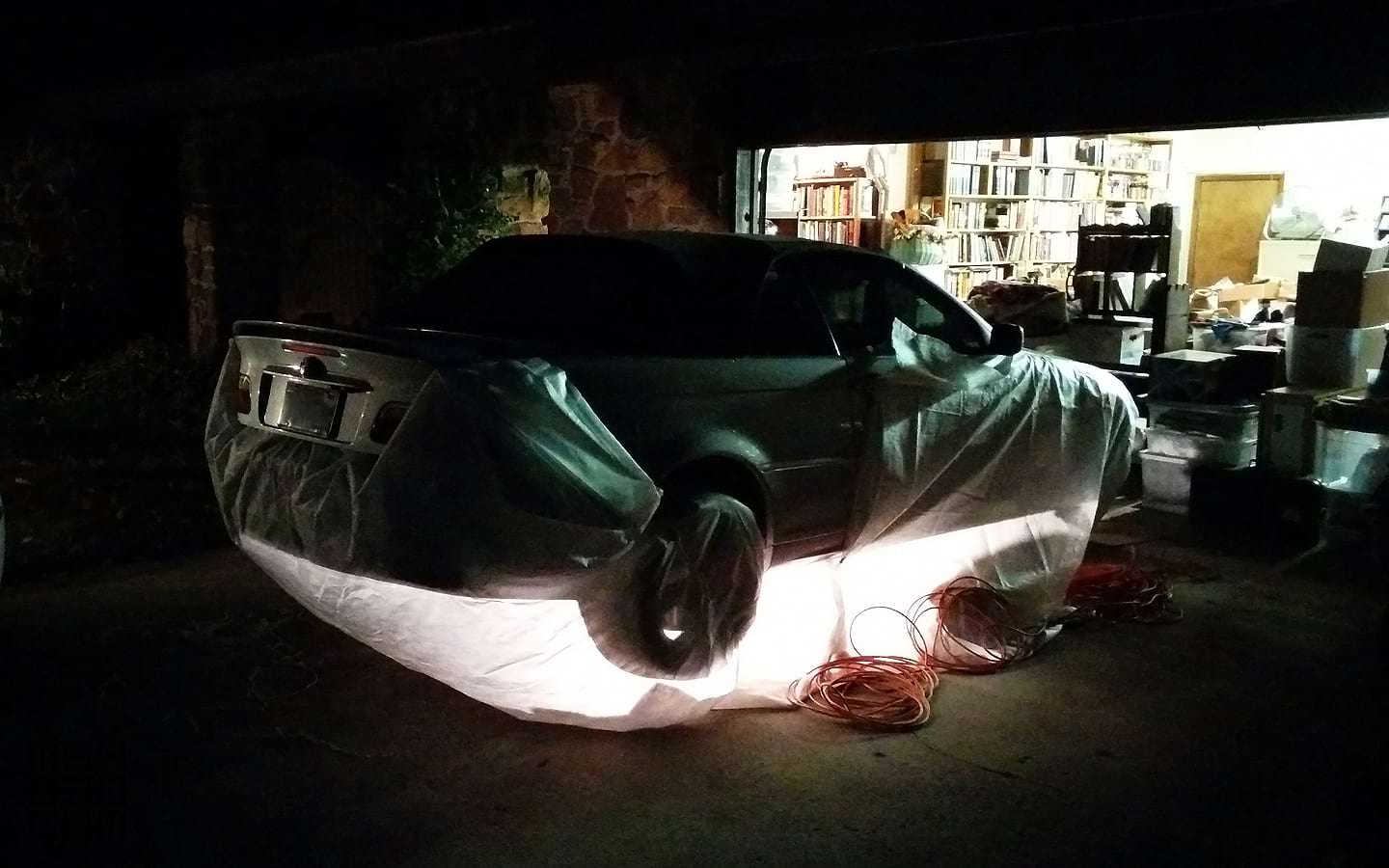
Occasionally, in the middle of new DIYs, you reach the point of no return where you’ve taken things so far apart that you’re required to finish the job. I can recall a brake caliper rebuild with the car on jack stands, brake lines disconnected, calipers disassembled, pistons removed, and suddenly discovering the new dust covers wouldn’t press on. Can’t drive it. Can’t tow it. Some of the best learning moments are when you’re forced to find a solution with no way out but forward.
Lessons Learned
Armed with only DIY guides and a driveway, I did my repairs with a floor jack, jack stands, and hand tools. This meant that replacing control arms, differential bushings, fuel filters, or the oil pan gasket were up close and personal affairs, wedged between the ground and the car with my face just inches away from whatever component I was working on. Repairs were also at the mercy of the weather. There were times where the weather simply wouldn’t cooperate and neither would the car. A project could go long, and a transmission service might run into the middle of the night and through the middle of a windstorm.
My best investments early on were in quality tools and equipment. Basic essentials like work gloves, a low-profile jack, heavy-duty jack stands, a 25″ breaker bar, torque wrenches, and work lights served me well for years to come. I started with nothing so it took some time to build a comprehensive toolkit. I pieced together socket and wrench sets, buying them piecemeal as the repairs demanded, although you can also buy a 250-piece toolbox anticipating the variety of future repairs that might come up. However you assemble your toolkit, having the right tool is worth every penny and can save hours of frustration and future headaches. The old adage “buy cheap, buy twice” definitely holds true here.
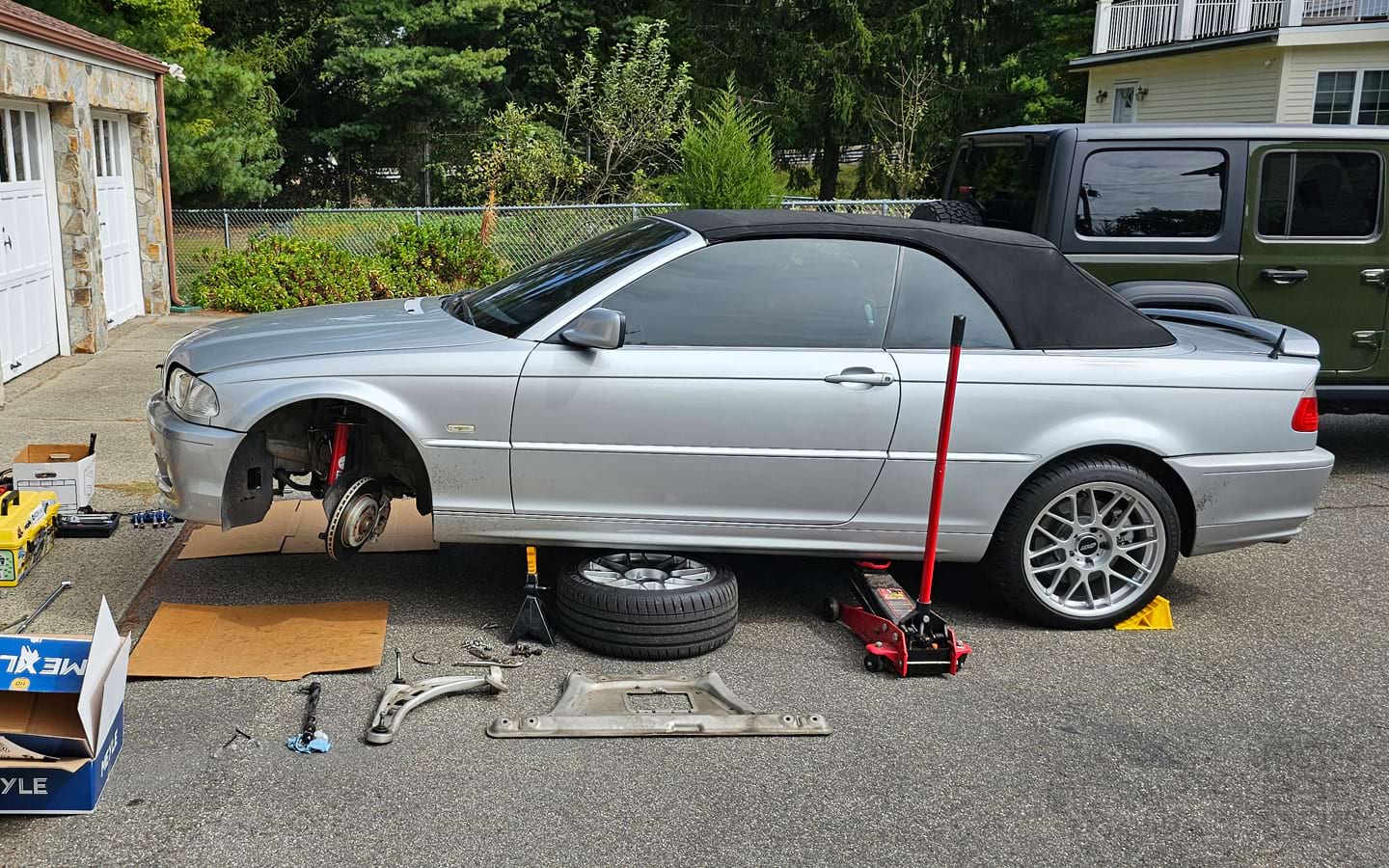
This doesn’t mean you need an entire workshop at your disposal, though, despite videos you might find of services filmed on a lift and done with power tools. While these may make repairs more convenient, they’re certainly not a requirement. You can fix your suspension just fine in your driveway or a little more luxuriously on a lift (the same parts are being replaced in the photo above and the one below).
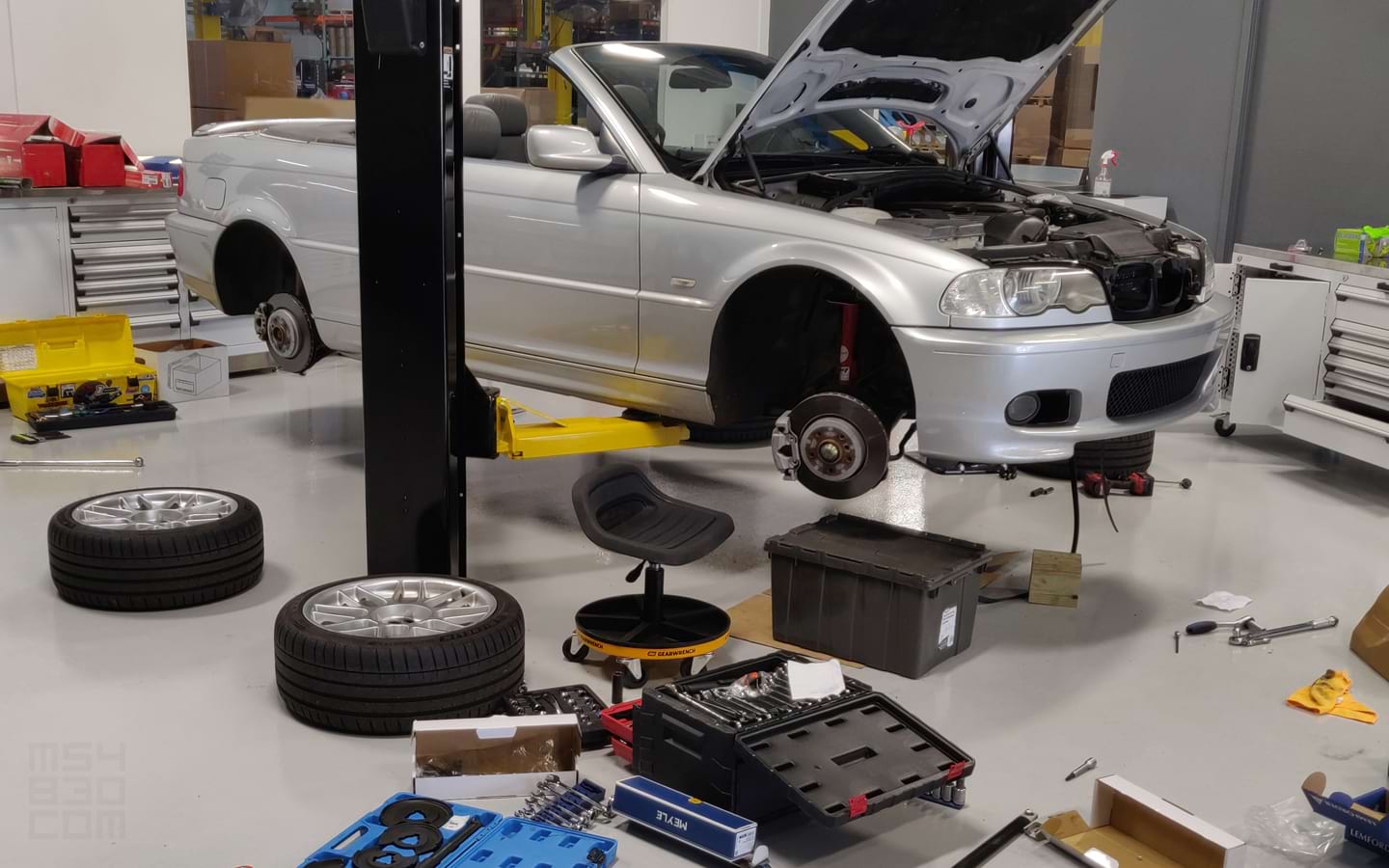
Years of working through repairs taught me more than just the repairs themselves. It became apparent that addressing things proactively on my time rather than the car’s, provided clearer skies and smoother sailing. Inevitably a nut would seize, a bolt would break, or a DIY guide would contain a mistake, but by staying on top of repairs, I found these happened less often and in less inconvenient circumstances.
One final tip: as tempting as it may be, make sure the car is mechanically sound before considering cosmetic upgrades. There are plenty of ways to make your car your own without sacrificing the maintenance budget. There’s no point in having the best-looking car on a flatbed.
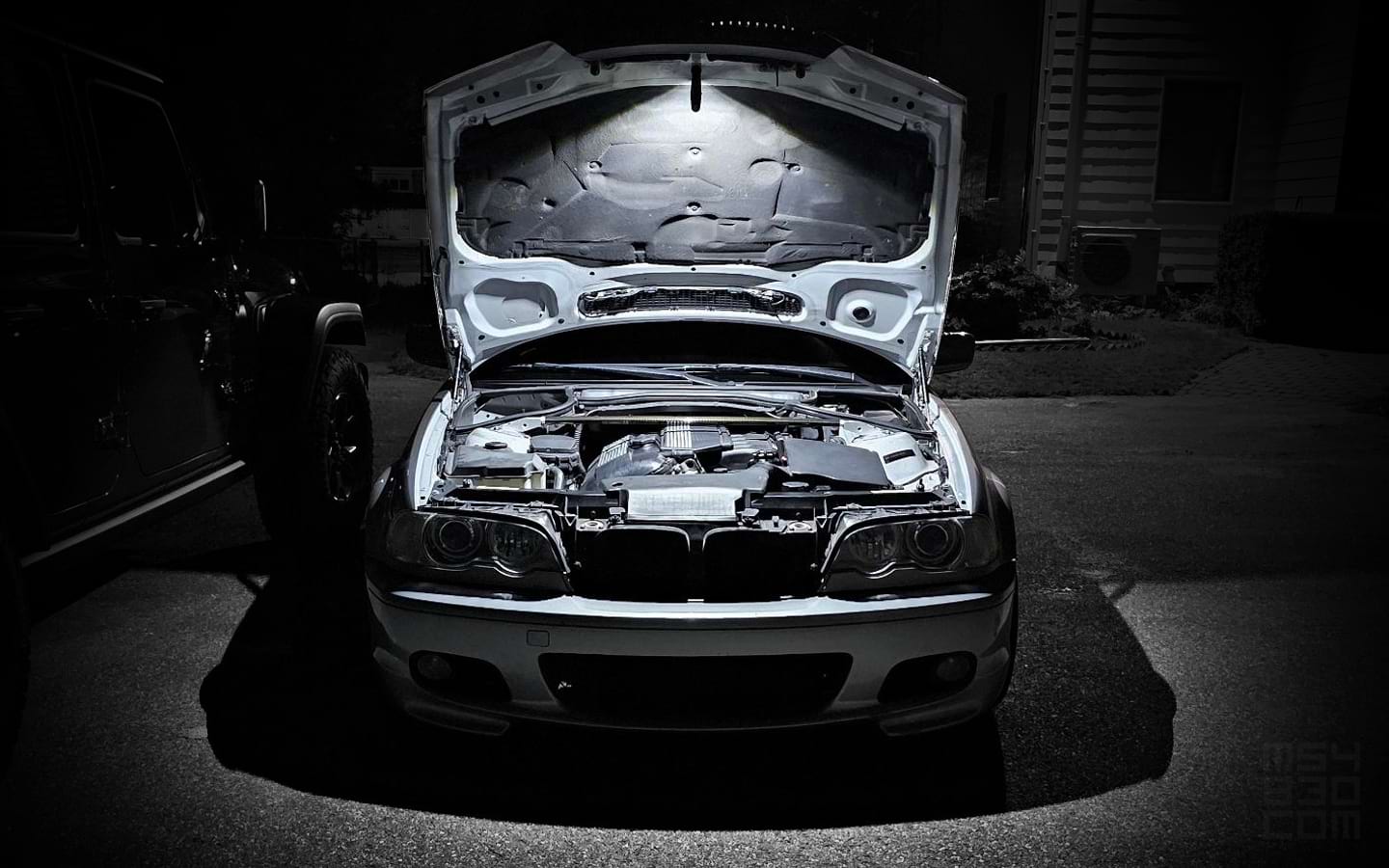
E46 Communities
As with any DIY project, you should thoroughly research the time and tools required for the repair, the steps you’ll need to take, and common pitfalls others have experienced in order to avoid them yourself. Thankfully, there are a number of online communities and forums to guide you along your journey.
It’s these online communities, along with the countless members who contribute to the collective knowledgebase around the E46 chassis, that have kept my car on the road today. Sites like Bimmerfest, Bimmerforums, E46Fanatics, M3Forums, and ZHPMafia make information accessible, identify required tools and helpful resources, and provide support for owners of all experience levels to succeed. Those online resources and DIY guides were life changing, guiding me from dealer-dependency to self-sufficiency.
Over the years, I became a contributor to those discussion boards, giving advice and building and sharing digital tools and resources. My goal then—and now—was to help a younger version of myself, someone eager to learn but unsure how to get started. Continued community engagement and hands-on experience allowed me to transfer that passion and knowledge into my professional life. I expanded my impact by joining and helping grow an automotive ecommerce business for over a decade. I remain incredibly grateful for the E46 community, the knowledge shared over the years, and the opportunities that continues to provide.
Access to a community’s collective wisdom accelerates learning and closes the knowledge gap around what it takes to DIY. Some of the launching off points I found helpful are included later in the resources section of this site.

Car of Theseus
At this point, there’s not much left on my E46 that hasn’t been repaired or replaced. What will break has already broken once before, so each repair is one that’s already been done. This isn’t the same car from 20 years ago, but then again, neither is the driver. Both have evolved and matured with a few more miles in their rearview mirror.
Starting my DIY journey, I didn’t realize the freedom, confidence, and independence this car would provide—and recreating that feeling of discovery is addicting. All you need is a nudge and some healthy curiosity into how things work. You’ll wind up developing, if you haven’t already, the patience to learn and understand how quality work needs to be done, the commitment and dedication to work through challenging projects, and the humility to know what’s in your wheelhouse and what isn’t. You’ll discover an entire network of like-minded enthusiasts eager to support and freely share their experiences, whether it’s around the E46 chassis, BMWs as a whole, or a wider range of European vehicles.
